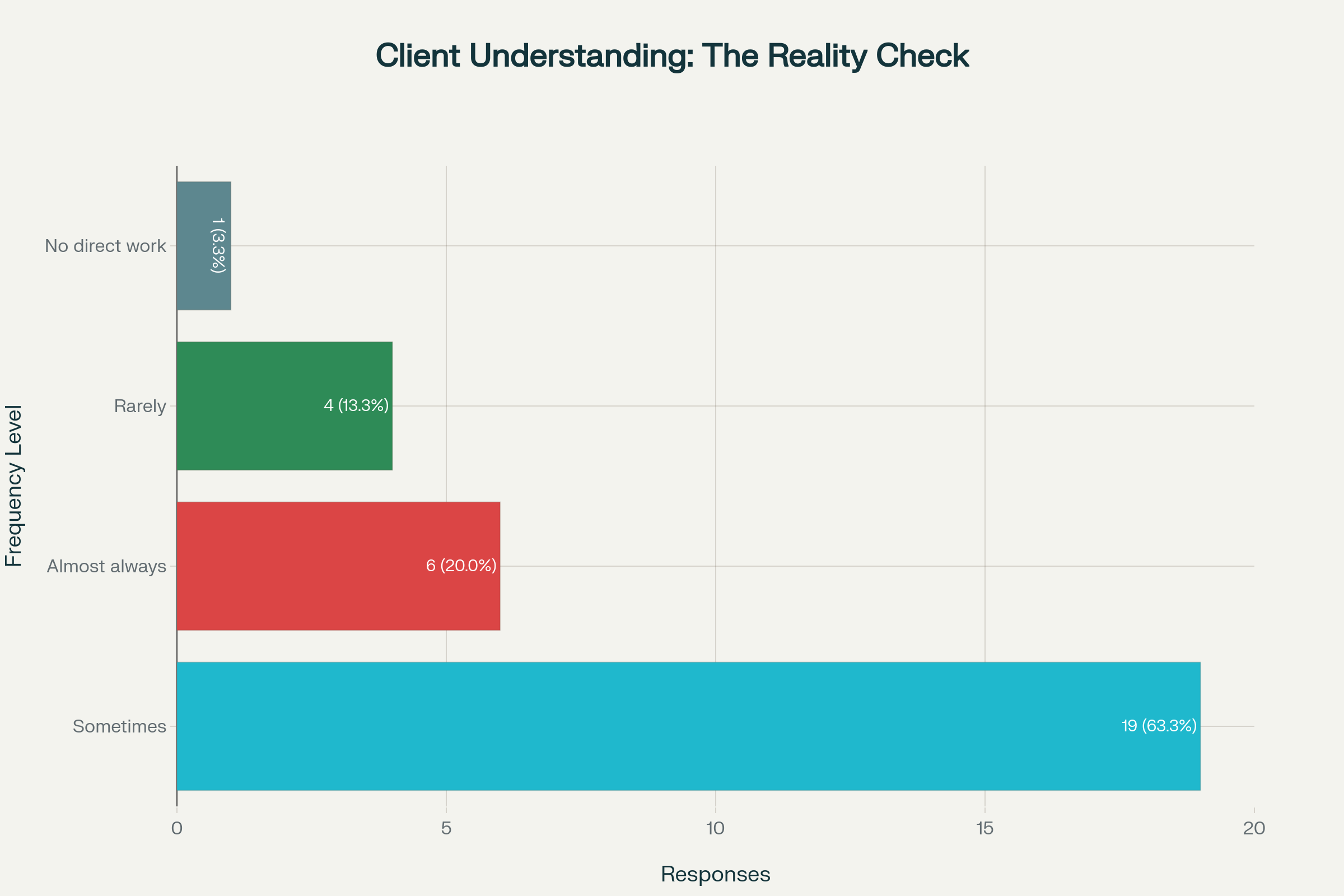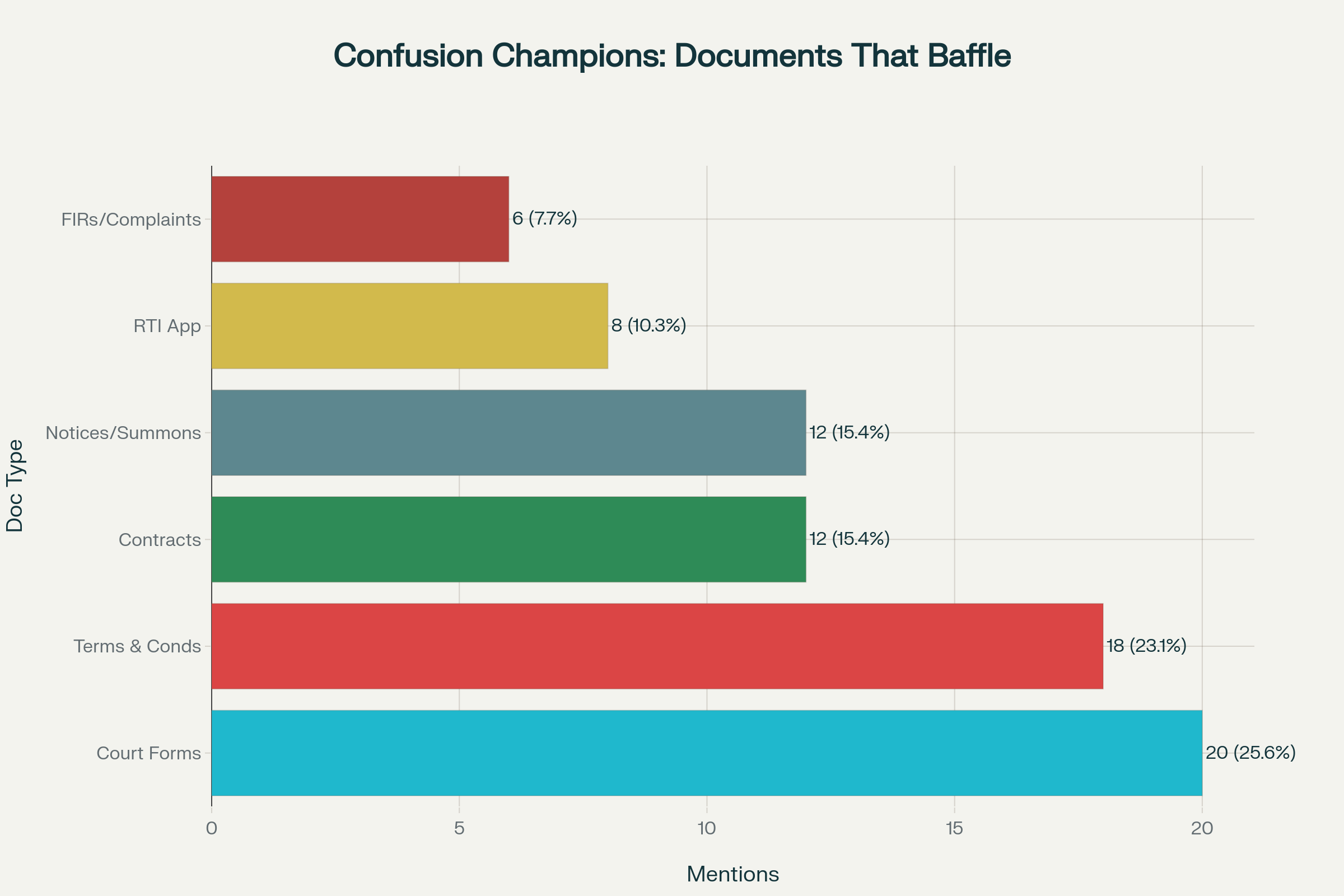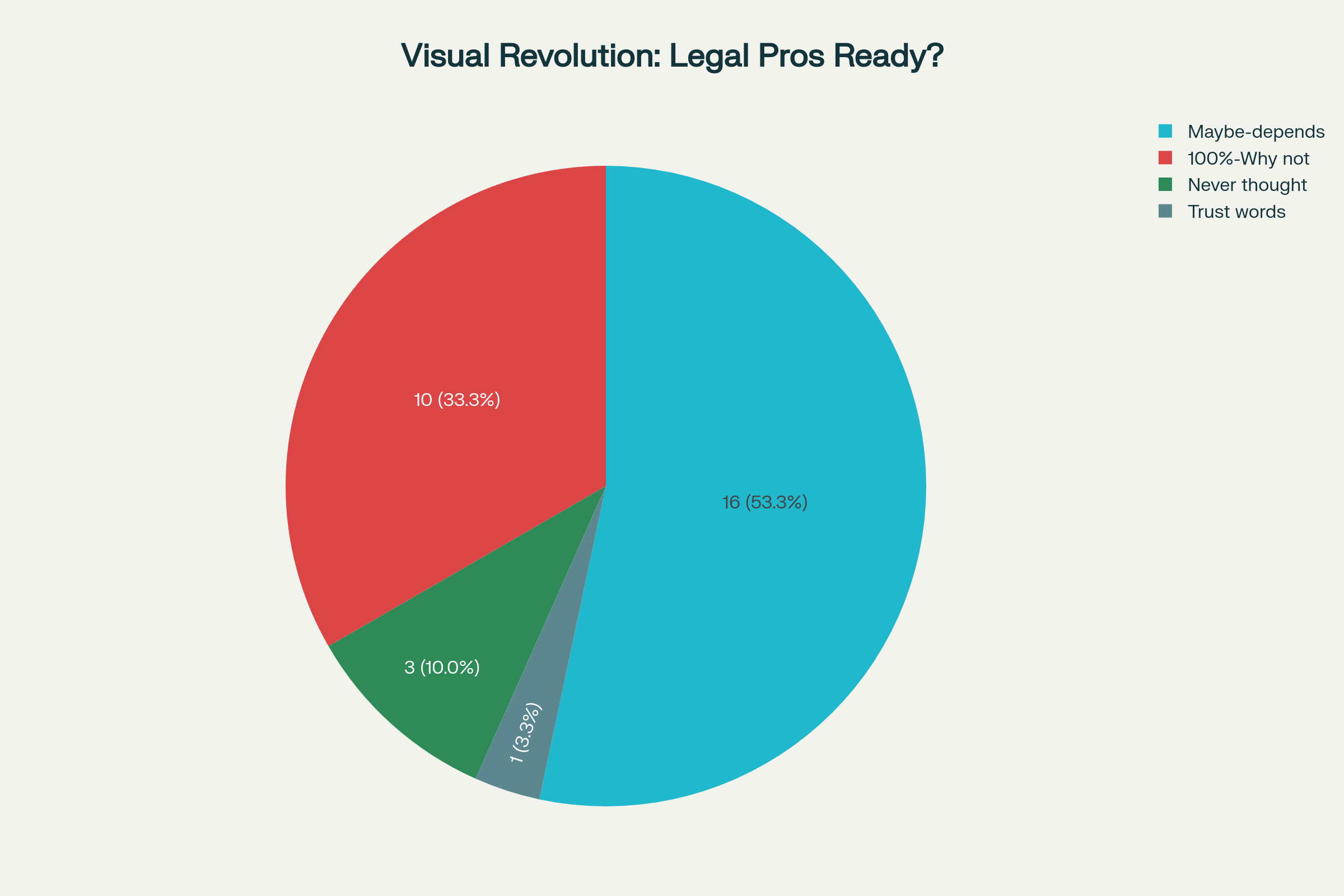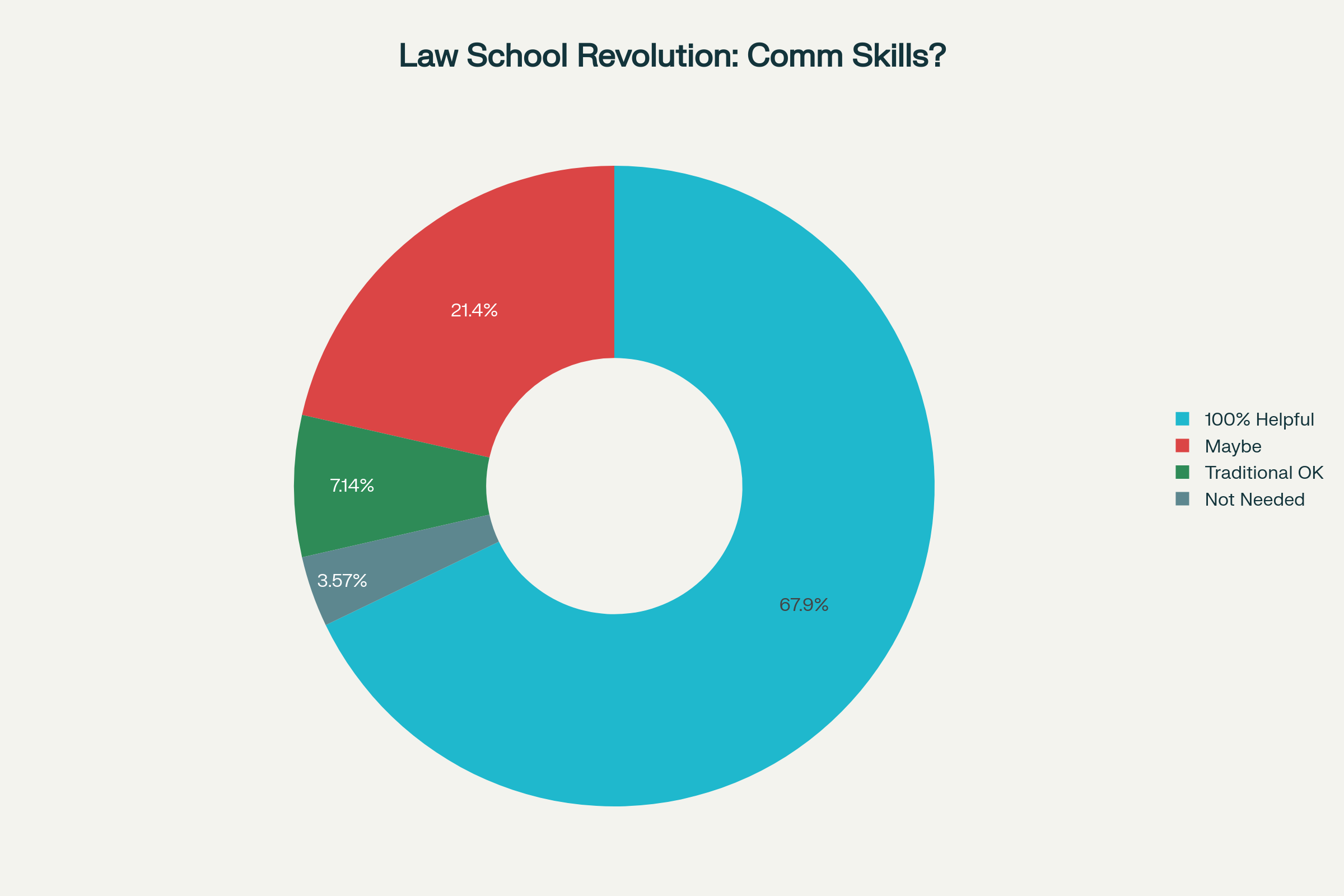What If Law Was Easy to Understand?
My Research Journey
I sent out a survey called “What If Law Was Easy to Understand? Help Me Explore” to gather real opinions from legal professionals about how they experience legal documents, websites, and processes. This research explores the gap between legal complexity and human understanding, seeking insights into what makes law accessible—or impossibly confusing.
The Process: From Question to Discovery
The Question
Why does law feel so inaccessible? I wanted to understand if legal professionals themselves recognize the barriers their clients face—and what solutions they'd support.
The Survey
I gathered 30 responses from practicing lawyers and law students, primarily in Gujarat, India. The survey explored client understanding, document confusion, platform usability, and attitudes toward visual legal tools.
The Analysis
I analyzed both quantitative patterns and qualitative insights, looking for trends in how legal professionals view accessibility challenges and potential solutions.
Key Findings Dashboard
The Client Understanding Challenge
Platform Struggles Are Real
Education Gap Recognition
Document Confusion Leaders
Visual Revolution Ready
User Experience Issues
Client Understanding Reality

Confusion Culprits

Visual Revolution Readiness

Education Revolution

Deep Dive: What Legal Professionals Really Think
The Pain Points
Court summons and notice system - delays and confusion
Legal language - overcomplicated and intimidating
Court procedures and forms - most confusing documents
Court summons and notice system - delays and confusion
Court summons and notice system - delays and confusion
Court summons and notice system - delays and confusion
What They Really Said
Some of the most revealing responses from legal professionals:
Who Answered: The Voices Behind the Data
Client Understanding Reality

Professional Mix
23.3%
3.3%
The Bigger Picture: Why This Matters
The legal design movement worldwide is recognizing that clarity isn’t just nice-to-have—it’s essential for democracy. From the UK’s plain English campaigns to Singapore’s visual law initiatives, the world is waking up to what my survey confirms: legal complexity is a barrier, not a feature.
Part of a Global Movement
Plain Language Movement: Making government and legal documents understandable
Visual Law: Using design and visuals to explain legal concepts
Access to Justice: Breaking down barriers between law and people
What’s Next?
Deeper Research
Expand the survey to more regions and specialties to understand how legal accessibility challenges vary across different legal contexts.
Design Solutions
Create prototypes of visual legal tools based on what professionals said they’d actually use—starting with court forms and terms & conditions.
Education Impact
Work with law schools to develop communication-focused curricula that address the gaps identified in this research.
